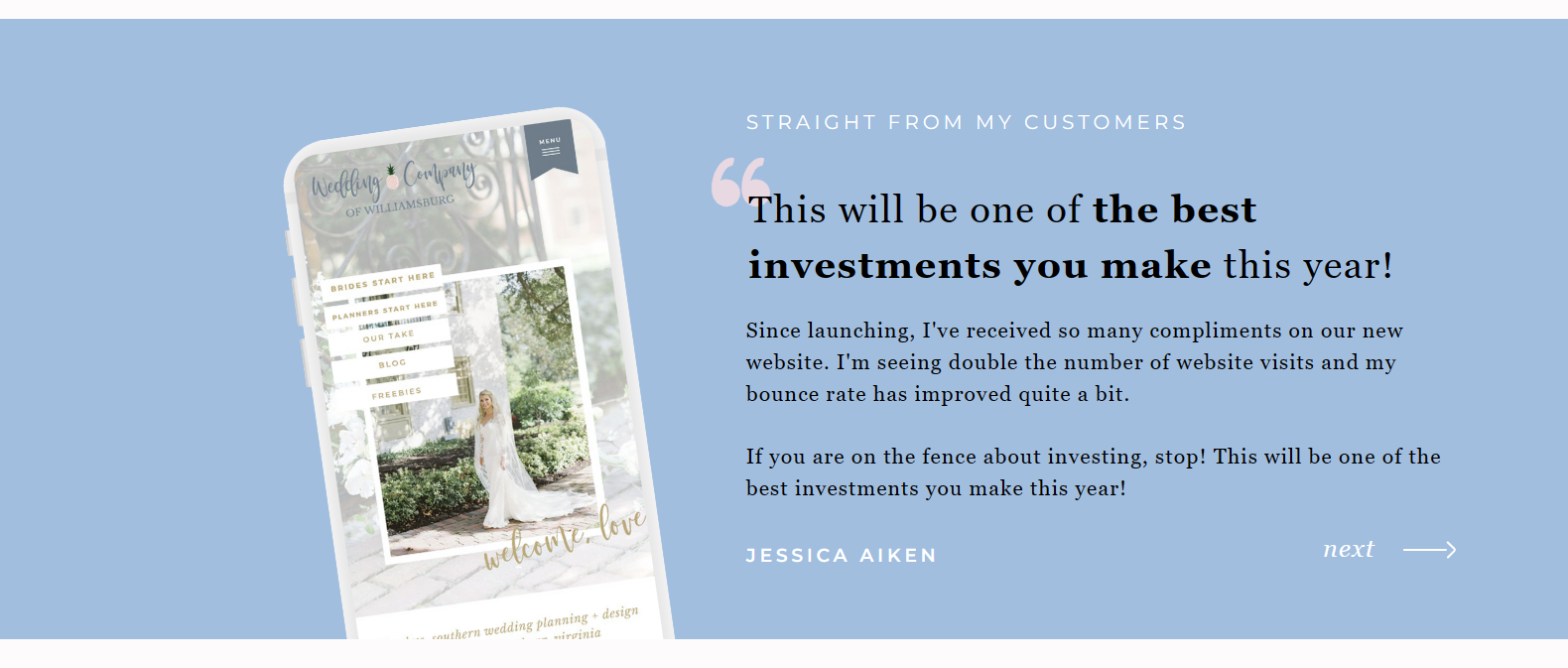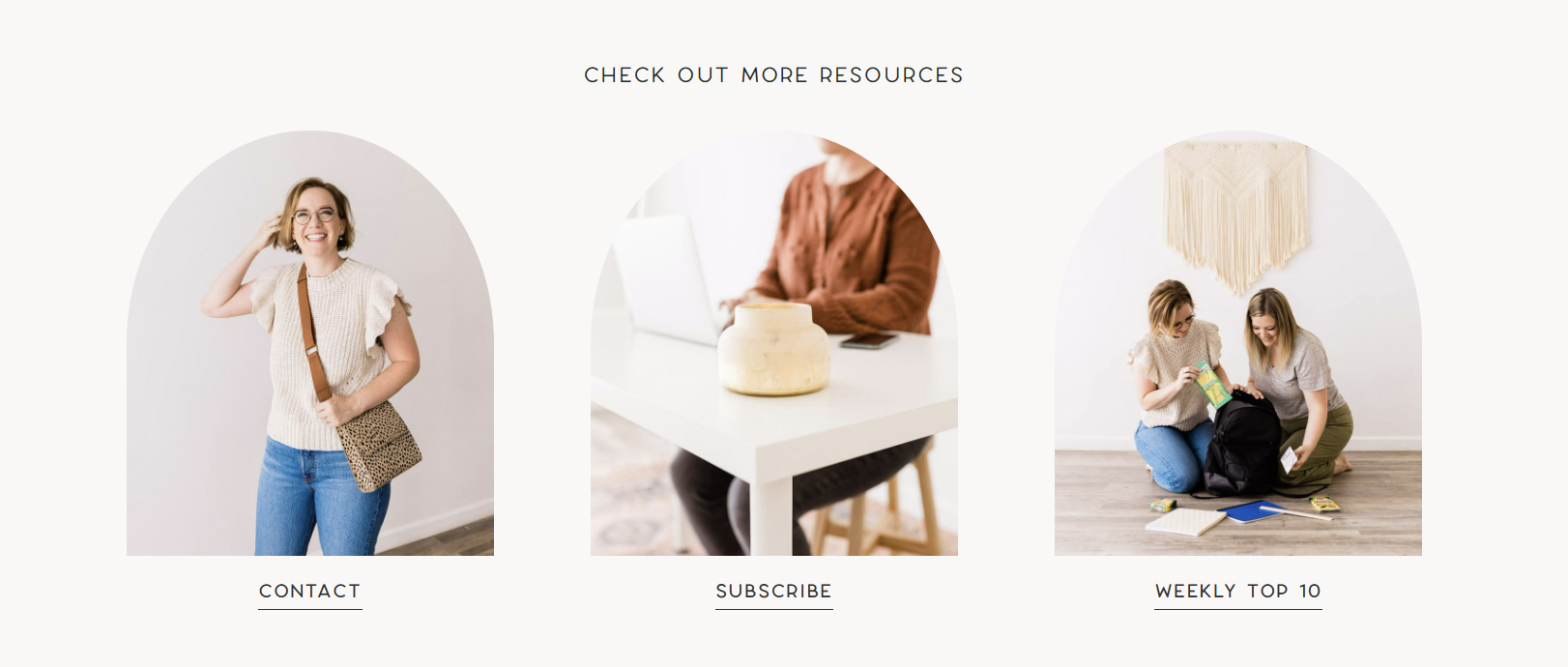
Introduction
The About page on your website is often the first page readers visit to learn more about you and what you have to offer before purchasing a digital product or service. Writing the perfect About page is important to attract loyal readers and engage potential clients.
Since it’s a key element in establishing a first connection with your audience, you need to pay special attention to this section of your website when crafting it.
Writing the perfect About page will help you drive leads to your online business, and capture readers’ attention while establishing your personal brand.
These are all good reasons to take a couple of hours to create the perfect About page for your business today.
Pin for later 📍

Why you should get your About page right
Building the perfect About page might not seem important when you get started.
After all, you have an entire website to build, blog posts to write, and opt-ins and paid products to create.
You might think site visitors will stumble upon your blog because they are looking for information or a solution to a problem and don’t really care about who you are.
And you are right. In the beginning, most people won’t care about your life story.
I know… This is not what you want to read… But it’s the cold hard truth.
When you get started, a vast majority of people will only read your blog posts because they stumbled upon a publication on social media or found one of your articles in search results (if you already know what you are doing).
With new visitors representing up to 80% of a blog’s traffic, most of them will never return to your website.
But over time, as the remaining 20% come back to read your new content, they will want to know who is behind the mask.
Since these returning visitors find your content helpful, they will probably be interested in your offer as well.
And this is when your About page has to convince them you are able to help them solve a problem and make their lives easier.
Later on, as you gain authority and become a reference in your niche, people will actively look for your website and content.
They will use Google search or another search engine to find more information about yourself.
In that case, what should be in the first search results?
That’s right; your website and About page.
Creating an SEO-optimized About page will drive a lot of traffic to your website once it’s established, making it the second most important page of your website after your blog.
What makes an excellent About page?
On your About page, you will have to cover your:
- Mission statement
- Core values
- Personal accomplishments
- Company’s achievements
The goal of your About page will be to educate readers, new customers, and brands on your mission and what you deliver.
An excellent “About” page:
- Helps readers understand what your content is about
- Attracts readers and potential customers
- Helps you make a great first impression on brands
- Boosts professional connections
- Builds a strong connection with your readers
- Helps your readers understand what makes you stand out from the crowd
- Establishes you as the go-to person in your niche
But how do you actually achieve this?
Your About page is your place to shine.
You might have to adapt your writing process to craft this page, especially if you are used to writing content in a very professional tone.
Since your About section should showcase your personality, you want to use a more natural voice.
If you are unsure about how to write your About page, pretending you are writing to a friend will make it much easier.
Now that you know how to write this page, let’s move on to what you should include in your About page to make it perfect.
Related read: 20 Blogging Mistakes to Avoid as a Beginner Blogger
9 steps to writing the perfect About page
1. Write a compelling opening
Your About page is the perfect place to give readers personal information like your name, age, where you come from, where you live, and your mission statement.
Start it with a bold statement to catch readers’ attention and give them a super short introduction about who you are and what your blog is about.
The goal is to introduce yourself quickly before capturing your mission in just a few lines.
Here is an example from Kelsey Ann Photo:

2. Describe your “Why”
Starting an online business is hard.
You need a true purpose to stay motivated in the long run and keep up the good work despite not seeing results in the first months.
But no matter how hard things are, you want your readers to know that you are here to stay.
It’s now time to:
- Describe what pushed you to start an online business.
- Talk about your passions.
- Describe how your passions are correlated with your field.
This is where you truly start to tell your story.
Because stories, especially when they show vulnerabilities, build trust.
The goal here is to show your readers you understand their struggles and might have faced them as well.
You want your readers to feel connected to you.
Here is an example from Pix&Hue’s About page:

Luise made the essence of her website crystal clear in 4 short sentences.
Noticed how she centered her purpose on helping her customers? This gives you a hint of what will come next.
Although your About page tells your story, you need to put your customers at the center of it.
Sure, you want to show the world how experienced you are.
But you want your readers to understand how They will benefit from that experience
3. Reveal your Unique Selling Point
It’s now time to stand out from the crowd!
Your Unique Selling Point (USP) is what differentiates your professional brand and products from your competition.
In this section, describe how your struggles helped you craft your offer and how it’s different from everyone else’s.
Let’s say you have launched an online business and realized how hard it is to be an organized solopreneur.
You decided to start selling templates and checklists to help your fellow online business owners be more organized.
So you can explain how you struggled to keep everything under control when you first launched your business.
Stress how time-consuming it was to create an effective organizational system.
And how being organized helped you make time to get more things done in your business.
Your unique selling point will always come from your own experience. Your personal brand is what makes you unique.
4. Add pictures
To make sure readers stick around, add pictures to break down your text.
Large blocks of text tire the human eye.
To keep your content interesting, you need to add images, graphs, and other visual elements that will catch your readers’ attention.
You can add pictures of yourself to show the world your face and build trust with your readers.
Readers want to know there is an actual human behind the content they consume.
And this is even more important to convert them into customers.
If you’re not ready to show your face yet, that’s ok.
Just add nice stock photos.
Selfies are not the only way to build trust with your audience. In fact, there’s one even more effective way to do so. More on that in a couple of minutes…

5. Elaborate on your offer
Most of your website visitors will not check your About page.
Again, 80% of them will visit your site, read one blog post (until the end, if you’re lucky), and leave.
The people who will visit your About page are either returning visitors in love with your content, potential customers ready to buy your products, or brands looking for a collab.
Readers who love your content and potential clients can be convinced to buy your offer rapidly.
This is why your About page needs to include a brief overview of the products and services you sell.
Prospective customers need to know exactly what you have to offer and how these products can help them.
Remember to keep this section updated as your business evolves and include client testimonials to show how your products helped them.
Reading positive feedback will convince your new readers to purchase your products or services.
Don’t know how to showcase client testimonials?
Here is a beautiful example from MeganMartin:

If you do not want to include your product and services directly on your About page, add a section with links to the dedicated pages on your website instead.
6. Share a couple of fun facts
You have covered all the serious stuff, so it’s time to share a few fun facts with your audience.
Show your personality and tell your stories about what makes you so different.
Letting your readers know a bit more about your personal life will help you bond with them and maybe even make them relate to your story.
Here’s an example from Kim Way Jones’ blog:

7. Add a Call To Action (CTA)
Now that your readers are done reading your About page, you need to give them actions to do next.
And that’s what CTA’s are for!
The goal is to keep your readers on your blog for a little longer.
The easiest way to achieve this is to include a bloc with your most popular blog posts and free resources they can download.
Or link to your popular blog posts, Contact page, or Newsletter form.
This will not only help your readers get a glimpse of your content but will also improve your stats by increasing average session duration and pageviews and decreasing outbound rates.
Here’s a great example from The Bargain Sisters:

8. Stay in touch
Remember when I said, a few minutes ago, that people loved to know who was behind the websites they visit?
Sure, adding pictures of yourself to your About page is a great way to connect with your audience.
However, there’s a stronger way to achieve this: asking people to reach out, whether they have questions or just want to say “Hi!”.
Taking time to actually reply to emails and helping your readers is the best way to build trust.
Check your emails and messages regularly and respond quickly.
Never forget that your readers and customers keep your business up and running.
You owe them a lot.
Adding your contact details and links to your social media on your About page is an amazing way to stay connected to your audience.
9. Add a form to your Newsletter
Since your About page will be one of the most visited pages on your website, adding a form for readers to subscribe is a simple way to increase your email subscriber count.
Add a form to your Newsletter and showcase the freebies your readers will receive when they subscribe.
Everyone loves free resources.
Especially when it is a useful checklist, a step-by-step guide, or anything else that can help get organized or level up in business.
Let readers know exactly what they will receive when they subscribe by giving them a sneak peek at your free resources.
This is a simple but super-effective way to get more subscribers.
Final Thoughts
Writing the perfect About page is an essential component of your online business success.
By following the tips mentioned above, you will create a captivating About page that showcases your personality, and expertise and resonates with your target audience.
Remember to keep this page updated as you and your business evolve and optimize it for SEO.
Your About page will not only engage visitors but also establish a strong foundation for building lasting connections and growing your online presence.
